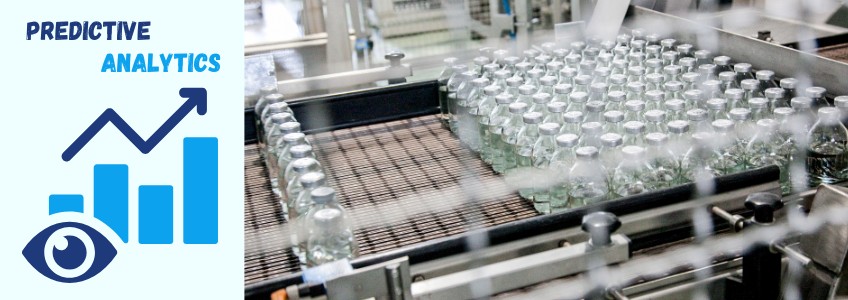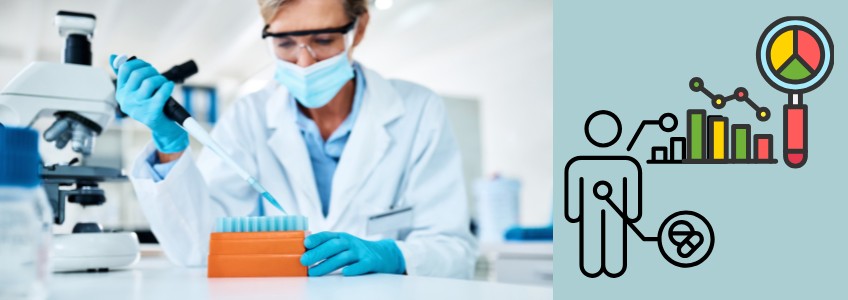
Introduction
In the fast-evolving pharmaceutical industry, operational efficiency is no longer just a competitive advantage—it’s a necessity. Pharmaceutical companies are under immense pressure to optimize their operations. This is because of their rising R&D costs, stringent regulatory requirements, and growing demand for personalized medicine.
In such a scenario, predictive analytics is a game-changing tool. It combines historical data, machine learning, and statistical algorithms to forecast outcomes and streamline processes.
In this blog, we’ll explore how predictive analytics is transforming pharmaceutical operational excellence (Opex) and what actionable steps can be taken to implement predictive analytics effectively in your organization.
What is Predictive Analytics in Pharma Opex?
Predictive analytics involves analyzing historical data to predict future outcomes using advanced algorithms and machine learning models.
In the context of pharmaceutical Opex, it enables companies to optimize processes across the drug lifecycle. It includes everything – from research and development (R&D) to manufacturing, supply chain management, and marketing.
Why does it matter?
Predictive analytics helps pharmaceutical companies in several ways.
- It reduces operational inefficiencies.
- Predictive analytics minimizes costs associated with failures or delays.
- It also enhances decision-making with data-driven insights.
- By personalizing therapies, predictive analytics also improves patient outcomes.
How Predictive Analytics Drives Operational Excellence in Pharma
1. Optimizing Clinical Trials

Clinical trials are among the most resource-intensive phases of drug development. Predictive analytics simplifies this process by:
- Identifying suitable patient populations based on demographic and medical data.
- Forecasting trial success rates by analyzing historical trial data.
- Reducing recruitment times and improving participant retention through targeted strategies.
Companies can therefore, minimize trial costs while ensuring high-quality results by leveraging predictive models.
2. Enhancing Drug Manufacturing
Predictive analytics enables pharmaceutical manufacturers to:
- Monitor equipment performance in real time using IoT sensors.
- Implement predictive maintenance to avoid unplanned downtime.
- Optimize production processes by analyzing variables like raw material quality and operator efficiency.
This approach reduces waste, improves productivity, and ensures consistent drug quality.
3. Streamlining Supply Chain Management

Supply chain disruptions can delay drug delivery and increase costs. Predictive analytics addresses these challenges by:
- Forecasting demand fluctuations based on regional demographics and economic trends.
- Optimizing inventory levels to prevent overstocking or stockouts.
- Identifying potential disruptions early to mitigate risks.
For example, during the COVID-19 pandemic, predictive models helped companies anticipate vaccine demand surges and optimize distribution strategies.
4. Improving Drug Safety and Pharmacovigilance
Ensuring drug safety is critical for regulatory compliance and patient trust. Predictive analytics enhances pharmacovigilance by:
- Identifying adverse drug reactions (ADRs) through electronic health records (EHRs) and clinical trial data.
- Analyzing patient characteristics to predict those at higher risk of side effects.
This proactive approach minimizes recalls and legal risks while improving patient care.
5. Accelerating Drug Discovery

Predictive models analyze vast datasets—including genetic information and past experiments—to identify promising drug candidates faster. This reduces R&D timelines and increases the likelihood of successful outcomes.
Steps to Implement Predictive Analytics in Pharma Opex
- Build a Data Infrastructure:
Establish a centralized data repository with access to historical datasets like clinical trial results, manufacturing logs, and sales data.
- Invest in Advanced Tools:
Use AI-powered platforms and machine learning algorithms tailored for pharmaceutical applications.
- Collaborate Across Teams:
Foster collaboration between R&D, manufacturing, supply chain, and IT teams to ensure seamless integration of predictive models into workflows.
- Start Small:
Begin with pilot projects in areas like demand forecasting or equipment maintenance before scaling up.
- Monitor and Refine Models:
Continuously validate predictive models against real-world outcomes to improve accuracy over time.
Tips for Success
- Focus on high-impact areas like clinical trials or supply chain management when starting out.
- Ensure compliance with data privacy regulations when handling sensitive patient information.
- Partner with technology providers or consultants experienced in predictive analytics for pharma.
Conclusion
Predictive analytics is revolutionizing operational excellence in the pharmaceutical industry by enabling smarter decision-making, reducing inefficiencies, and improving patient outcomes.
Therefore, by integrating predictive tools into your operations, you can stay ahead in an increasingly competitive landscape while delivering better value to patients and stakeholders alike.
Ready to transform your operations with predictive analytics? Write to us for a consultation!
